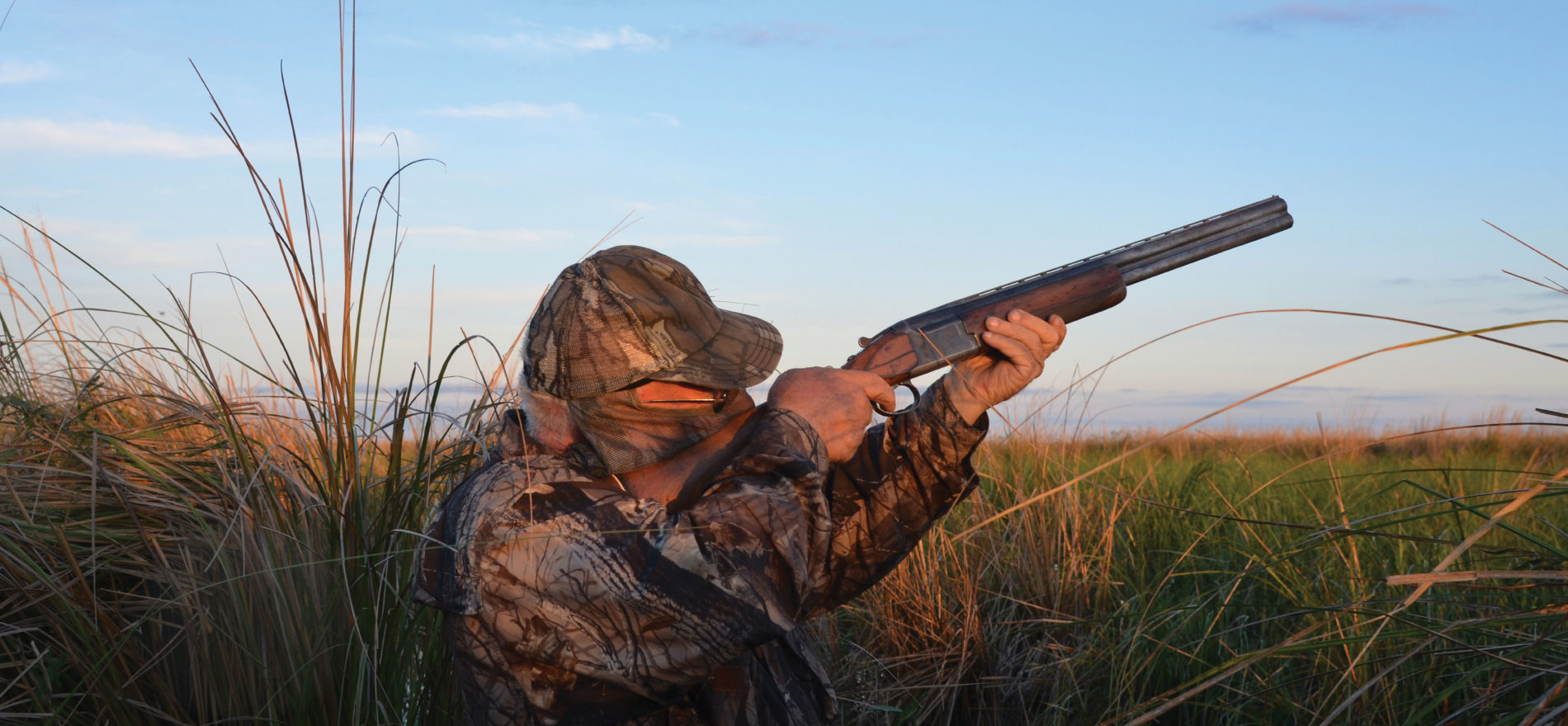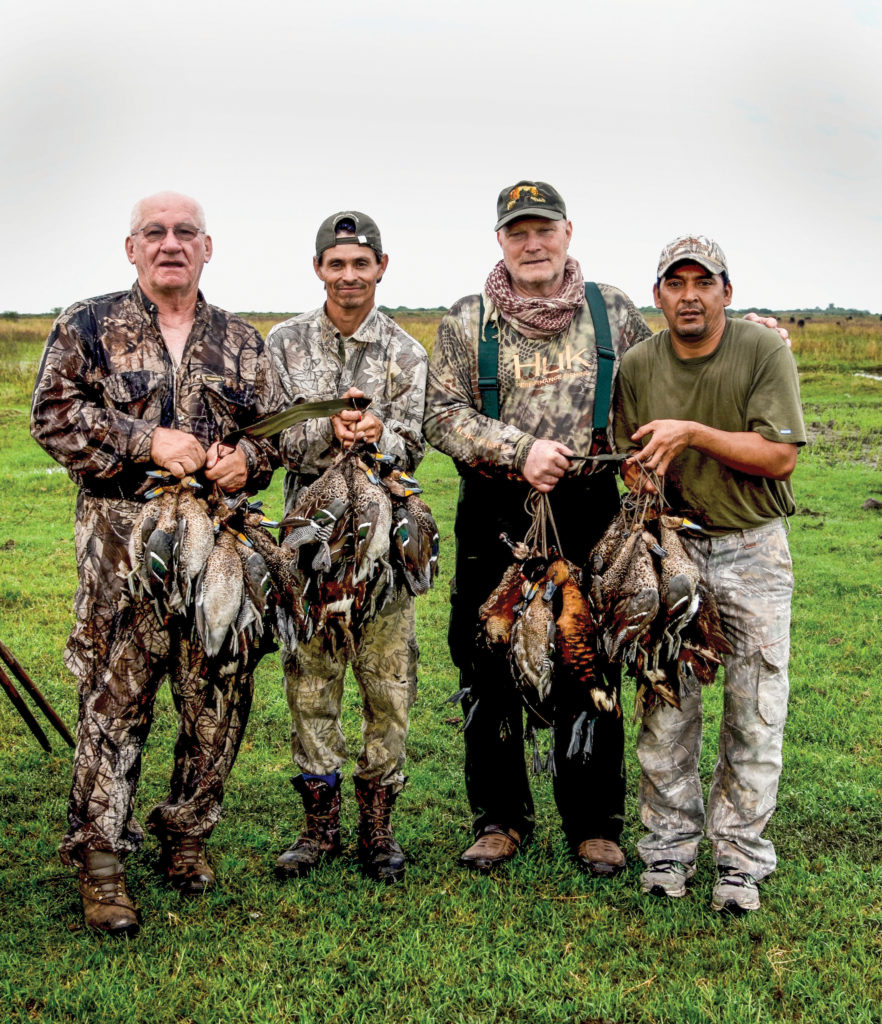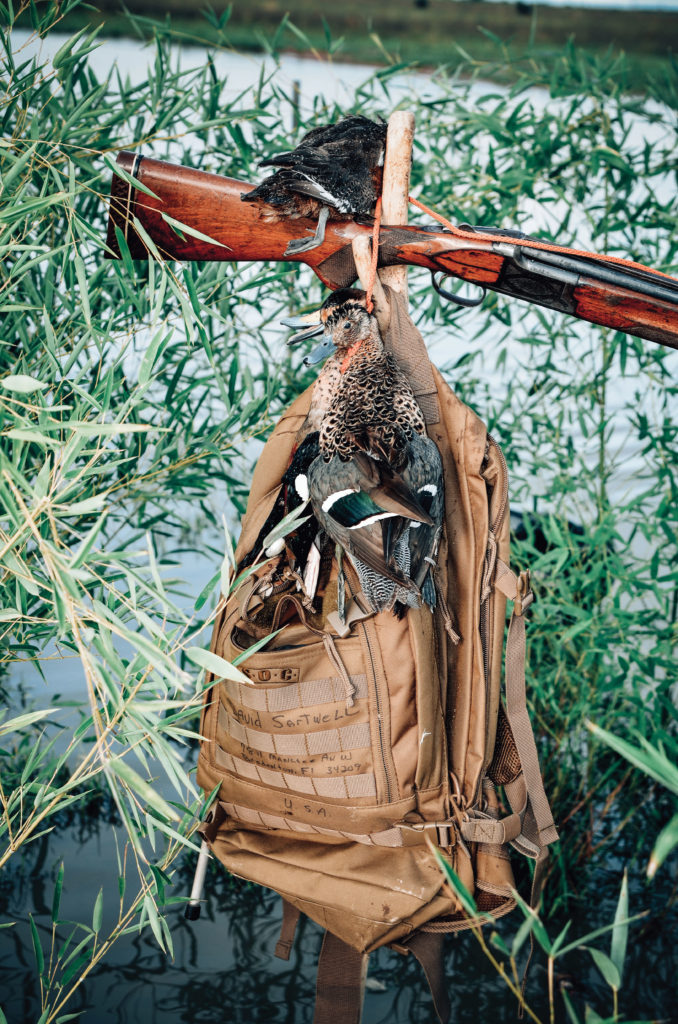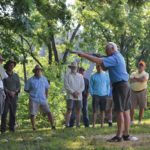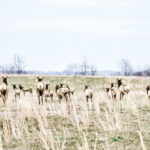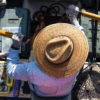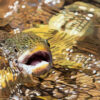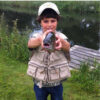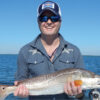The sounds of the black, star-studded night were muted; an occasional duck disturbed the silence with its call.
Cover photo by Mary Gayle Sartwell
We plodded through the flooded rice fields that surrounded us, our headlamps providing some flickering light as the mud tried to suck the boots from our feet. With a mesh net full of decoys swinging to-and-fro on my back, my shotgun held in the crook of my elbow, and the camera bag strapped to my chest, each step over uncertain ground was an adventure in balance. We found a spot where the water was a little deeper, creating a tiny pool approximately 30 feet across and 18 inches deep. Miguel, our guide, brought along ten, eight-foot-long tree branches that we stuck into the soft mud to make a temporary blind in the middle of the rice shoots. Once firmly planted, I broke the very tops of the shoots, weaving them right and left to give more substance to the top of our haven.
We set a dozen decoys 40 feet in front of us and placed a battery-powered decoy four feet from the waterline on a stake. The mechanical wings flapped back and forth like the real thing. We were set.
The ebony night eased toward slate and the stars disappeared in the diffused light. The fields slowly came to life. The sun began to color the sky long before it arrived; clouds on the horizon transformed from black to a dusty rose, reflections from the coming red-hot orb. It was already t-shirt warm, unusual for this time of year in this part of the country.
A few early risers began to rocket through the sky, heading to their habitual feeding spots. We strained to see what we could hear. One set came in from behind us, no more than eight feet above the surface, whooshing overhead before we realized they were there, and then, in a nanosecond, disappearing into the dark background of the surrounding rice stalks. I turned and grinned at Miguel, silently indicating to him I could have knocked them down with the barrel of my shotgun.
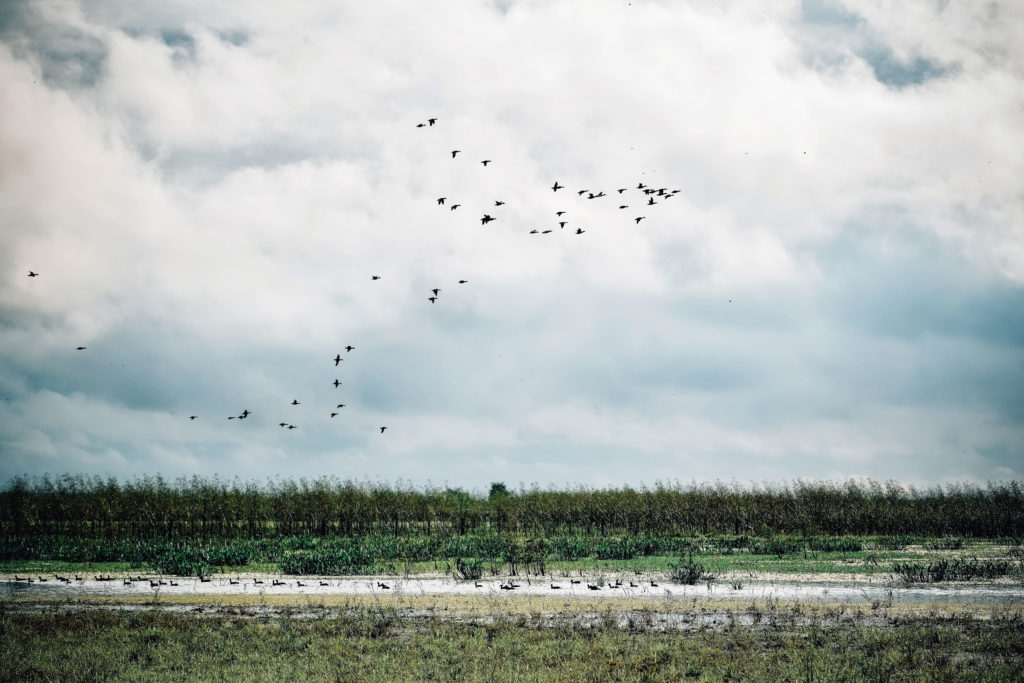
We could hear but not see a half-dozen teal drop into the water just beyond our decoys. Fortunately, birds attract other birds. They chortled and burbled around, carrying on a dawn chatter only they could understand. Night gradually turned into day and we could see.
Hordes of ducks flew towards us from the south. The sky filled with their numbers as they searched for breakfast. One of my companions on the trip, Don Brusca, opened the day’s first salvo from his position a quarter-mile to my right. The blast from his shotgun prompted more ducks to fly.
The sky was full of flighting birds and thousands of black ibis drifted above the marsh. Mute white swans dropped in on our decoys. Rising doves blotted he sky near the tree line to our west. Swarms of blackbirds darted back and forth, creating an intricate pattern that dazzled the eyes. Minus the swans, these birds had their own calls, filling the air with a cacophony of sound that was both deafening and wonderful. Their voices weren’t startled calls of fright; these were thousands of life forms announcing their presence.
Miguel whistled from a homemade call fashioned from the brass of a 12-guage shell and the ducks decoyed in, appearing to travel in small family groupings. Three to six would flash at us and either attempt to land or give us a look-see. We fired first at a set of cinnamon teal. I wish I could say that I took a double from that flock with my over-and-under Citori, but I can’t.
The guide stood to my right and slightly behind me. The action intensified. I fired as the teal decoyed, pop open the barrels and watch the gun automatically eject two shells. As soon as they cleared the barrels, Miguel shoved two new shells into my gun. I snapped it shut, ready for the next arrivals. Wisely following Brusca’s advice, we put modified and improved cylinder chokes in the barrels. Passing shots were fairly close, especially in the early going.
After an hour, Brusca and I reached our limits at 30 ducks each. Several different kinds of teal were in the bag. Green-wing teal accounted for about half, but there were others, including the cinnamon, with their rusty colored bodies, rosy-billed pochard, silver, and white-ringed teal. We gathered them as birds swarmed around us.
The truck waited for us at the end of the dike, but it was a good hike out through the rice fields. We stopped at the farmhouse at the end of the road to drop off our birds, where they would be cleaned and sent to market.
Don Brusca, his brother Richard, nephew Andrew, and I were guests of Frontera Wingshooting (tfrontera@fronterawingshooting.com), which has several lodges located throughout Argentina. The lodges are high-end operations offering incredible meals, gracious accommodations and well-trained guides. We flew from Miami to Santiago, Chile, and then into Cordoba, which is northwest of Buenos Aires. Earlier in the week, we hunted dove at the La Zenaida lodge and then drove six hours northeast to San Javier to spend four days at the Veracruz operation.
We returned to the lodge for a great breakfast. After changing clothes and gear, the four of us walked to the dock and headed out into the marsh for a day of fishing for golden dorado and piranha. To call this a marsh is an understatement. This region of Argentina is approximately one foot above water level. We traveled for miles through rushes that lined the waterway, turning through a series of openings that were a maze gone wild. The guide new exactly what he was doing, but I would have been hard-pressed to get us home.
We rounded one corner where the channel narrowed, and the water ran more swiftly. We pulled into the reeds and tossed the anchor into the 10-foot-high wall of vegetation that lined the riverbank. The boat drifted away from the bank and we worked the water with eels.
I swear, the first eel barely hit the water before it was attacked by a fish that ran deep and sideways, ripping line off the reel and bending Richard Brusca’s rod tip. The fish swam away from the boat for a hundred feet or more, then turned and came right back at the boat as the angler reeled line as fast as he could. That fish ran three more times before it fatigued. Because the water was dark and murky, we still had no idea what kind it was until Brusca cranked in his prize: a huge, golden-colored piranha, the size of which I had never seen before. We were astounded and marveled at the teeth for which the species is famous.
Now we were all excited. It was my turn and I used a long, black marabou streamer. I bent the rod to its task and sent my fly out into the current. I stripped the fly twice and a fish slammed into my offering.
This fish behaved differently than Brusca’s fish; big and heavy, it dove deep to the bottom and sulked for a moment. I worked it back towards the boat and kept a tight line. The fish made a mad-dash, first to the right, then to the left, taking line from my reel. After it tired, the fish came gently as I reeled it to the boat and discovered it was the legendary golden dorado (Salminus brasiliensis).
The Latin name is misleading because it is neither a salmon nor related to the saltwater dorado. As I raised the net, the 24-inch, trout-like fish glistened in the sunlight like living gold. After examining my catch, I understood why the words “dourado” in Portuguese and “dorado” in Spanish are used to describe the fish; they both mean “golden” and are accurate. We spent the rest of the day catching heavy fish after heavy fish, wearing out both the equipment and the fishermen.
That night, after a supper of famous Argentine beef, copious amounts of Malbec and sweat flan, I snuggled into my bed and experienced that deep relaxation that comes from a fulfilling day. Ahead lay a couple nights of tango in Buenos Aires, but I was content drifting off into golden dreams in which yellow trout keep rising to my fly.
Dr. David and Mary Gayle Sartwell are an award-winning writing and photography team who have published thousands of articles in both newspapers and magazines. They are outdoor people specializing in adventure travel. Both love travel, bridge, good food and wine, fly fishing and outdoor adventure of any kind.

